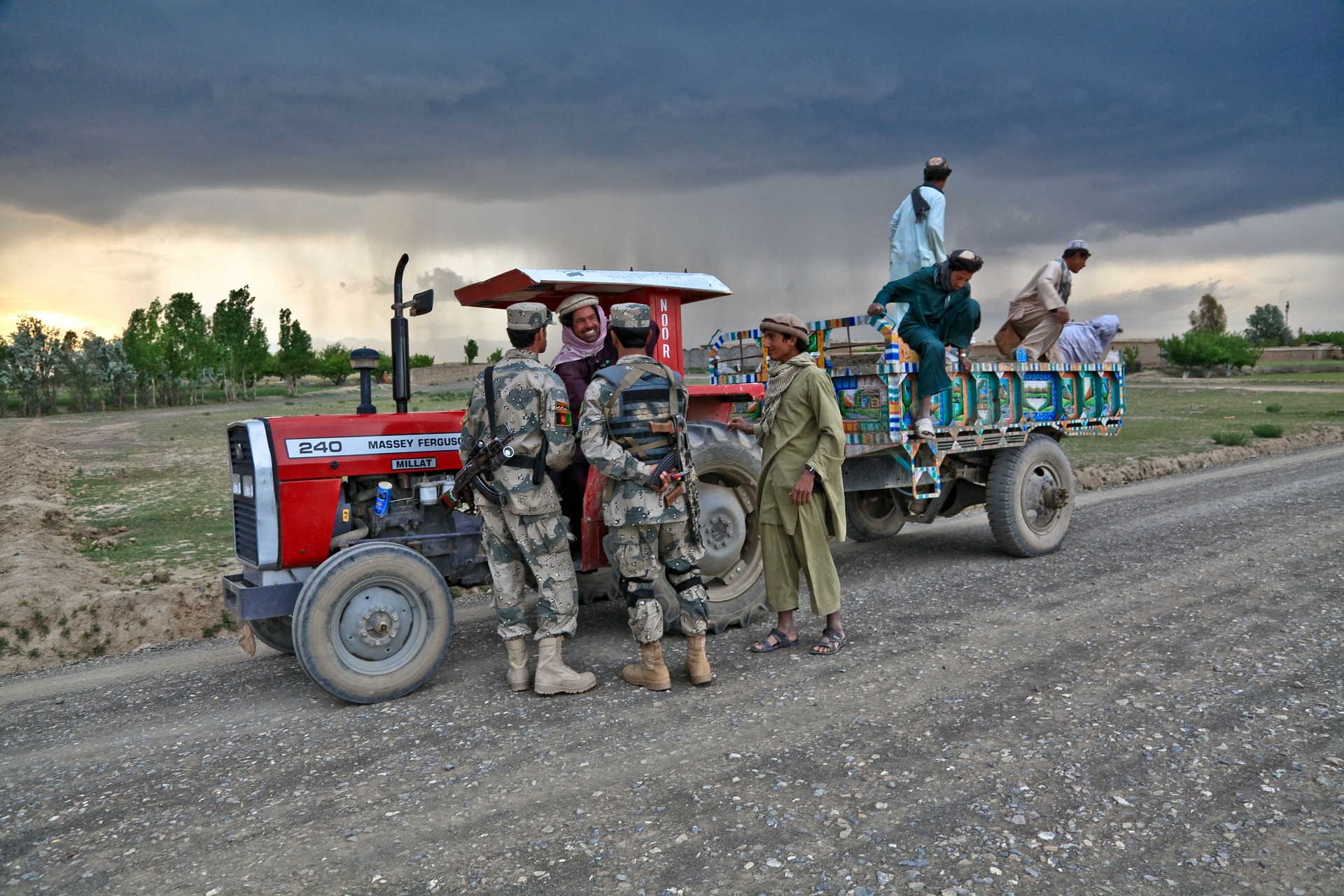3 ways the US military is gearing up for climate change
Imagine the United States military “confronted with multiple warming-related crises abroad while the homeland itself is suffering from severe climate effects and many of the military’s own facilities are immobilized by rising seas or other climate impacts”.
A
uthor Michael Klare calls this the “all hell breaking loose” scenario, and it provides the title for his new book, All Hell Breaking Loose: The Pentagon’s Perspective on Climate Change. Klare is The Nation’s defence correspondent and Five College Professor of Peace and World Security Studies, based at Hampshire College in Amherst, Massachusetts.
Klare explains that he wrote the book “in the belief that the American military and intelligence communities have something unique and valuable to contribute to the national conversation on climate change”. But it has relevance well beyond US domestic political concerns.
So how is the world’s most powerful military adapting to climate change? Three broad themes emerge from Klare’s account.
1. Upgrading facilities
Klare cites examples of US military bases which have been affected by extreme weather events. In 2018, for example, after wind and flood damage from Hurricane Florence, the cost of repairing Marine Corps Base Camp Lejeune in North Carolina was estimated at US$3.6 billion. Soon after, Hurricane Michael damaged 17 F-22 Raptor fighter jets – each costing US$339 million – which could not be evacuated in time from Tyndall Air Force Base.
Klare reports that “huge sums are being allocated for the protection of Navy and Air Force facilities in the area—usually under the designation of ‘base modernization’ or ‘weather protection,’ without climate change mentioned directly”.
Not only bases need to be adapted. Klare argues that “weapons, vehicles, and support systems will have to be reconfigured to cope with extreme heat and sand infiltration, while uniforms and body armor will have to be made lighter and more effective at diffusing heat. The problem of water scarcity will also have to be addressed”.
The Marine Corps is leading the way, according to Klare: its Expeditionary Energy Office is testing technology such as portable solar energy systems that could reduce reliance on supply lines and increase the self-sufficiency of field operations.
Historically, innovations initially funded by the US military have often filtered through to the market, and Klare argues there are “obvious implications for nonmilitary communities… the Army’s drive for ‘net zero’ bases—facilities that draw all their energy and water from on-site sources—could be fruitfully emulated by towns and cities”.

Helping allied forces keep order is one adaptation. Photo by Amber Clay / Pixabay
2. Planning for new kinds of mission
Upgrading facilities can be linked to the need to prepare for new kinds of mission. Klare recounts that the Department of Defense’s Southern Command requested US$28 million for infrastructure at Guantánamo Bay to house refugees “in the event of a maritime mass migration”. He quotes an account of a training exercise which simulated “the mass migration of people from multiple Caribbean islands after a series of hurricanes devastate the area”.
Klare describes another exercise, in the far north of Norway, to explore how armed conflict might arise over access to resources in the Arctic which melting ice could open up. Among other potential climate-related flashpoints, Klare discusses how water shortages could cause tensions between India and China, and India and Pakistan.
“The American military may not be preparing for ‘climate wars’ as such,” writes Klare, “but it certainly anticipates that global warming will undermine the stability of many countries whose survival is deemed important to U.S. security”.
Exactly which countries the US might be making climate-related contingency plans about – and what those plans say – is classified information, but Klare speculates that Pakistan, Saudi Arabia and Nigeria are likely to be on the list.
3. Building the capacity of other countries
The “all hell breaking loose” scenario is less likely to occur if national militaries in climate-affected countries are able to maintain order without appealing to the US for help. So another way in which Klare identifies the US military adapting to climate change is building the capacity of their counterparts in other countries.
In Nigeria, “American Special Forces and Army Infantry specialists have been deployed to the Nigerian Army Infantry School, for instance, to help train soldiers committed to the fight against Boko Haram” – support for which Klare links to poverty caused in part by climate-related impacts on livelihoods in farming and fishing communities.
Similar projects are happening around the world. In a 2015 report to Congress, National Security Implications of Climate-Related Risks and a Changing Climate, the Department of Defense described various activities “to increase partner abilities to reduce risks and implications from environmental impacts and climate change, including severe weather and other hazards.”
Even if “the countries affected by such discord may not be viewed in Washington as possessing great strategic significance in their own right”,says Klare, the breakdown of state authority could lead to humanitarian catastrophe and waves of migration “generating fresh havoc in neighboring countries”.
Klare’s book traces the military’s interest in climate change back through a series of documents starting with National Security and the Threat of Climate Change in 2007. That report introduced the phrase “threat multiplier” to describe the potential impacts of climate change in countries already struggling to meet the basic needs of their populations.
Twelve years on, says Klare: “Even as President Trump and his senior advisers have sought to reverse many of the climate-related policies initiated by his predecessor, the armed services— driven by their own vision of what the future holds— are proceeding in their efforts to prepare for combat on a climate-altered world.”
The ideas presented in this article aim to inspire adaptation action – they are the views of the author and do not necessarily reflect those of the Global Center on Adaptation.